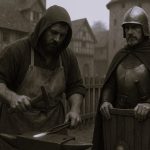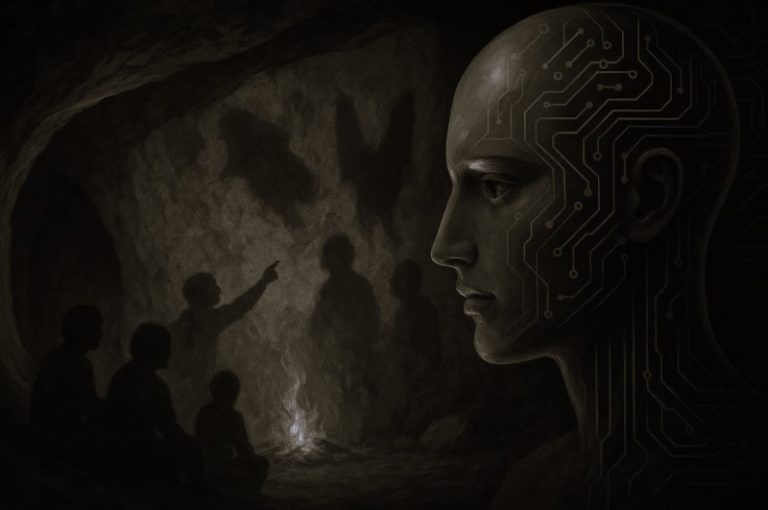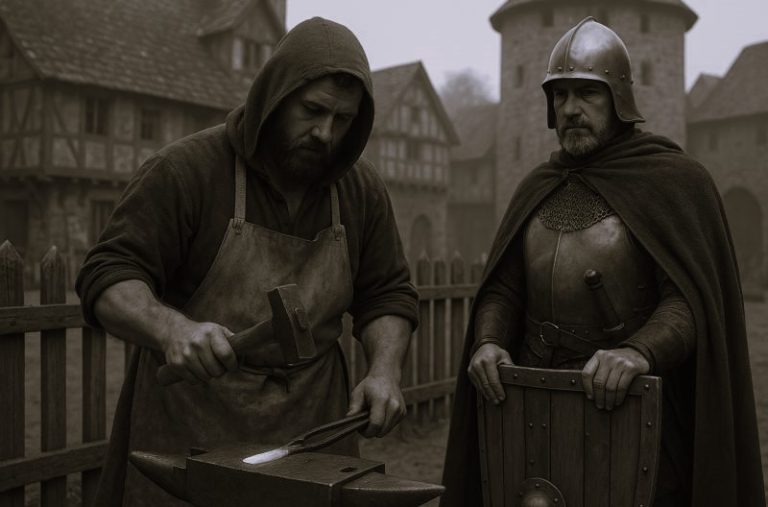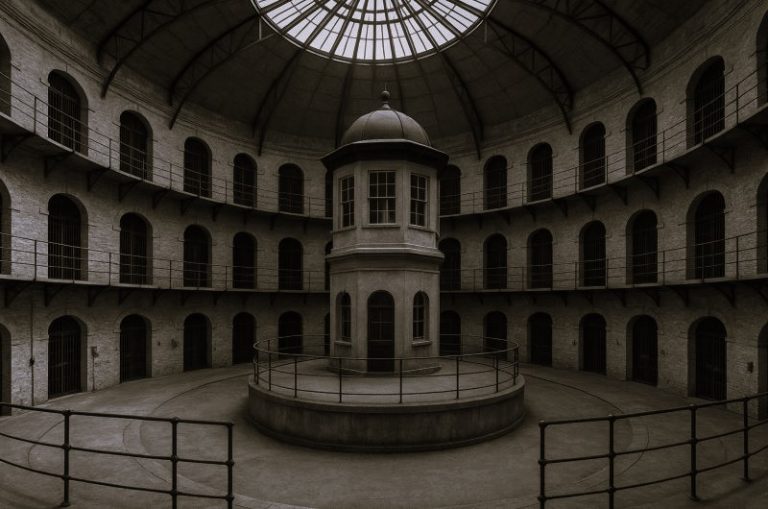
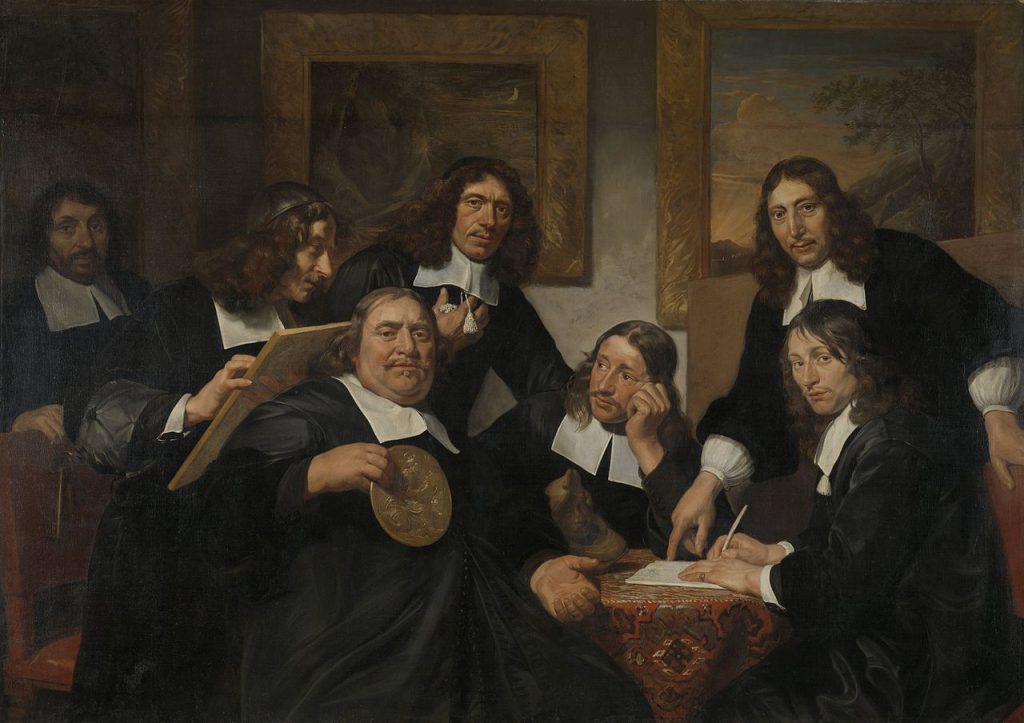

By Carroll D. Wright, J.D.
United States Commissioner of Labor, 1885-1905
NOTE: This article, now in the public domain, was written by Mr. Wright in 1905 and the terminology reflects the time and usage in that context, including religious references to “Christ” and “Pagan”.
I do not propose to discuss such organizations in detail, but principally to show the difference in character, at different times, and also wherein they were similar. Unfortunately the history of such organizations in ancient times is exceedingly meagre. It was not the habit of writers to make much mention of the interests of labor or how the lower orders earned their living or conducted their affairs. It was quite natural perhaps when historians were recording the events of administration, of wars or of great racial changes, to omit the consideration of what then seemed the lesser affairs of life, but a great deal has been unearthed by modern archaeologists from inscriptions on slabs and monuments, which throws some light upon this subject of labor organizations and which helps us to understand the slow development of the workingman through the ages. The slabs containing the inscriptions have been’ lying without observation, some on their original sites, others in museums. However, they have been recorded, catalogued and numbered; but their importance has been little understood or little considered. This, in connection with the lack of interest on such subjects, accounts in a way for the meager history.
We all understand the modern labor organization, or think we do. We certainly understand that it exists, but it exists in various forms, chiefly as the trade union, which is a society of working people usually pursuing the same occupation, the society being organized for the purpose of mutual help in providing for sick and death benefits and sometimes out-of-work benefits; but chiefly it is organized to resist the attempts to reduce wages and to insist upon higher wages, fewer hours of labor and improved conditions of shop work. The Unions sometimes have insurance features attached to them and for many years have paid out large sums of money in this way. They attempt to regulate the business in which the members are engaged. Until quite recently the trade union, consisting of workers in one craft, cared nothing for the interests or welfare of the workers in other crafts, but now, through the sympathetic strike, one trade union is quite likely to take part in the conflicts between the members of another union in an entirely different occupation and their employers.

Other labor organizations are broader, more philosophical, like the Knights of Labor, an organization dating from 1869. This body not only strives for the usual purposes of trades unions, but goes beyond by its endeavors to unify wage-earners without regard to the trades followed. The proposed aim of this body is to secure the fullest enjoyment of wealth which they claim is created by workers. These two types are characteristic of all labor organizations. The one primarily is selfish, looking to the interest of its own craft, the other is broader, more philosophical, looking to the interests of all crafts. It is not strange that the first succeeds and the latter practically fails. Perhaps in another state of society the broader basis will win.
Until a very few years ago, modern trades unions were supposed to be the direct outcome of the guilds of the middle ages. All writers, or nearly all, took this view, and undertook to account for the origin of modern organizations by tracing the development of the mediaeval guilds to modern times. It is now seen that these modern unions are not direct descendants of the craft-guilds of the middle ages, and there is no evidence that they are such descendants; all the historical proof seems to be the other way.
Perhaps the earliest writer to make this distinction was Brentano, in his Guilds and Trades Unions, where he says: “These guilds were not unions of laborers in the present sense of the word, but persons who, with the help of some stock, carried on their craft on their own account.” It is probably nearer the truth to conclude that through the varying and ephemeral organizations of wage-earners and journeymen which existed 300 or 400 years ago, and which were composed solely of wage earners, these modern unions have taken their roots. Yet this direct connection does not have historical confirmation, for such associations were condemned by the law and there was too close a resemblance between them and the guild system which preceded. The best that can be said is that there was a class of employees in England who neither strove to become masters, nor were in condition to seek controlling influence, who first started the trade union idea.
The 18th century saw a persistent development of the capitalist employer and a decreased ability on the part of the worker to own and control the material and tools of his especial trade. Perhaps it was the factory system as much as any other element that developed the modern trades union, because while, before the inauguration of the factory system, the workingmen and their employers lived and worked in very close personal relationship, under the factory system this relationship was lost in large degree. The employer, instead of having his journeymen and apprentices around him and feeding them at his own table, became the employer of hundreds, and now of thousands, thus severing that close personal relation of the olden time.
Trades unions sought to take the place through their organizations of that relationship, to protect their members against what they considered the encroachments of capital, to look after the welfare of members in various ways – and through organization to be in a position to resist or enforce demands. True it is that these organizations have become powerful, and in this country, alone constitute at least ten or twelve per cent of the wage-earners of the country, and they number now probably two million members. This proportion of the total is a little larger in this country than in England or on the Continent.
The whole history of the development of trades unions is interesting as an economic and social study and; they are exercising a great influence in the conduct of modern industry. In a nutshell, the modern labor organization of
whatever character is composed of wage-earners only. The members pay dues and receive such benefits as may accrue.

The medieval guild was an entirely different affair. It may have sprung from some form of ancient organization, but in its more essential elements it did not. Medieval conditions originated in German conditions, adapted,, however, and moulded by the Roman civilization, but wherever the Germanic element exercised any influence, whether in Germany, England, France, Italy or Spain, the tribes of Germany that carried that influence found some sort of a labor union and in some sense inherited them. Notwithstanding this the guild of mediaeval days was more’ thoroughly German than Roman, for the Roman guilds were made up more essentially of slaves, as we shall see, while the guilds of the middle ages found their membership among the free men, but in their composition they were not what we understand as trades unions, although they resembled them.
The name itself is somewhat significant, being derived, so it is supposed, from the Anglo-Saxon word gylden or gildan, meaning “to pay,” for a very important feature of the guilds was the contribution by or assessment of its members. Curiously enough the word signified any kind of an association, without reference to its purpose, where a common fund was created through individual contributions of members. But it is certain, in accordance with all modern authorities, that these early guilds had no connection with trade or industry; they were social, sometimes protective, sometimes political and almost unanimously composed of a religious spirit. As Gierke puts it: “The old Germanic guild embraced the whole man and was intended to satisfy all human purposes; it was a union such as exists today only in our towns or cites. It answered at the same time religious, moral, social, economical and political purposes.” This might apply to our early town settlements in New England.
Some of these guilds were social and charitable. Growing out of them or existing with them were the guilds-merchant and the craft-guilds. The earlier of these were the guilds-‘ merchant, securing great power and sometimes constituting the governing force of towns, but the craft-guilds gained in strength and ultimately took the place of the guilds-merchant. It is with the craft-guilds that we have to deal.
Brentano, in his History of Guilds and Trades Unions, argues that they were associations of craft-guilds to protect themselves from the “Abuse of power on the part of the lords of the town who tried to reduce the free to the dependence of the unfree.” This view is not generally supported.
Dr. Cunningham, in his History of Industry and Commerce, took the ground that these guilds were “called into being not out of antagonism to existing authorities, but as new institutions to which special parts of their own duties were delegated by the borough officers or the local guild-merchant,” while another authority. Prof. Ashley, late of Harvard University, takes the ground that they were self-governing bodies of craftsmen, more or less under municipal control but without force. He thinks they are in no. case to be identified with modern trades unions. In fact, authoritative writers, as already indicated, have taken that view.
While the guilds-merchant may be designated as monopolies in traffic, the craft-guilds certainly were monopolies in production. They were organizations of employers and had charge of trade in cities. No one could carry on any trade, either in the city or its surroundings, unless he became a member of the craft-guild. While the social features, consisting of gatherings, processions, feasts, etc., were an important element in the guilds, they also provided for assistance to the needy and for the common welfare; but these features were insignificant in the constitution of the craft-guilds. Their true significance was economic not social, and thus they have been confounded with modern trades unions. To secure membership there must be a full knowledge of the details of a trade, for the principal provisions of the craft, as indicated, in fact the very soul of its existence, consisted in regulations relative to the excellence of products and the capacity of workmen.

Much good resulted from these guilds, such as the prohibition of night work or sales by candle-light. They also were important in the cathedral building ages, the religious features of the guild, with the skill it could command, giving it large influence. They developed the apprenticeship system, but the guilds were not a monopoly in one sense for any one could become apprentice and the number was limited only by the ability of the master to support them, or by considerations of a public nature. The apprentice formed a part of the master’s family; he was to keep his master’s secrets, doing no injury or committing waste on his goods; he was not to frequent taverns or to betroth himself without his master’s permission, or to mingle in any way with lewd women.
All disputes were settled primarily by the wardens of the guilds, some of whom were chosen from the ranks of the journeymen themselves. The journeyman was protected against exactions on the part of an unscrupulous master, so conflicts in interest were unknown. The journeyman, always looked forward to the period when he would be admitted to the freedom of the trade. There was no insuperable obstacle thrown in the path of the workman; the time was the period of supremacy of labor over capital, and the master himself worked.
These mediaeval guilds expanded were really composed of masters and men to a certain extent; certainly all had to be members of or workers in a trade. There were journeymen’s societies contemporaneous with the guilds, such as fraternities of servants and others. The unions were everywhere confined to the youths who gradually became masters and were then enrolled as full members of the craft-guild proper. These unions were therefore fitting schools for the guilds, but as time went on there was a change and the guilds became wealthy and powerful, and thus secured the hatred of the people, and their downfall came at various dates in different countries but from the early to the middle part of the 17th century.
There is little or no similarity between these guilds and modern labor organizations, except in so far as the guilds and the modern trades unions seek to regulate the apprenticeship system and to secure to the masters in some respects aid and assistance. Their antagonism lies in the fact that the guild served to secure for the master the labor of the apprentice for a very long time at a very low rate of wages or for no wages at all, to keep down the wages of the journeyman and to keep down competition by limiting the number of masters.
That such unions or organizations or associations have had an existence is well known to historians, but, as I have intimated, they have not been understood or very carefully studied. But the fact is established that they existed, and they were very largely impregnated with some religious cult. They shaped their course from that of the aristocrats who worshipped the shades of their ancestors. The workingmen, however, in their unions had their patron gods.
Like all history, the facts concerning early organizations are nebulous and hazy, so the date of the first labor organization cannot be given. It is certain, however, to have been at a very early date, for Plutarch in his Theseus relates that as early as 1180 B. Ç. there arose a demand from the common people to be allowed to enter into the Eleúsinian mysteries. The workingmen complained that they were excluded from the aristocratic religious rites, their employers, the aristocrats of the time, taking the ground that these workingmen had no souls. Thus the workingmen’s thought came strongly into view at that early day, and it resulted in the organizations of the time.
Trades unions were common in Solon’s days. The Twelve Tables of the Roman law distinctly specified the manner of these organizations. References may be I found in the time of Joshua (1537-1427 B. C), to trades unions, and those of us who are members of the most ancient but now speculative trade union and are master workmen, are familiar with those of the time of Solomon and know how Hiram of Tyre, the architect of the Temple of Jerusalem, organized his workmen. He had with him 3200 foremen from Tyre and 40,000 free artificers, but Phidias it is said
employed 50,000 unionist craftsmen ten years in designing and completing the Parthenon.

Mommsen relates that in the time of Numa Pompilius there were innumerable communal associations. These organizations consisted mostly of freed men, but it is difficult to learn just what inspired them. The right of organization in very ancient time extended all over Europe, so far as is known. Numa Pompilius tolerated these organizations; in fact he ordered that the entire working population be distributed into eleven guilds. Mommsen does not quite agree to this, although it is given on the authority of Plutarch. Mommsen concludes that there were eight classes, but the distinction is of no consequence for the purposes of this paper.
The trades were distinct and covered all the arts of antiquity. During the reign of Numa the trades unions made great advancement; skilled workmen were required during all the war-like times, and the workers had their golden era, so far as ancient times are concerned. The distinct character, however, remains an unwritten page, but the right of combination continued for over 600 years, there being no interruption until 58 years before Christ. Then it was that the industrial population of Rome was considered outcast, and being well organized they exerted considerable, even powerful, political influence.
King Numa, while, not originating the union of the trades at Rome, permitted and encouraged what already existed. The Collegium was a positive trade unions, originally created for the purpose of mutual aid and protection. A trade union of today, while protective, also performs the function of an aid society, as insurance, burial funds, sick funds, etc., and this was true in Numa’s time. So the collegia, while maintaining their economic or trade union purpose of securing mutual advantages in trade relations, sometimes passed for religious institutions. Sometimes the burial society was distinct and had a name of its own. This was true of the early Greek unions, and those who ate at a common table were burial societies, ship carpenters, boat makers, millers, firemen, wine dealers, etc., etc. These collegia were found in the Roman Empire, Asia Minor, the Greek’ Islands, Spain and Gaul, as well as in Greece and Rome, and they were established in England by the Romans and thus probably gave rise to the medieval guilds.
Ward, to whom I have referred, gives a list of thirty-five trades unions existing at one time under the law of Constantine. All the stone cutting, mason work, everything in the way of art was done by the unions. The victualing systems were carried on by unions, as well as the manufacturing trades. There were also unions of players among the Greeks and the Romans. We have heard something of the influence of St. Crispin in this commonwealth. ‘ They had a powerful trade union in the olden time. The story of the origin is too long to be repeated, but it grew out of the persecution, of two brothers named Crispin and Crispinian. These Crispins offended by embracing Christianity, settled in Soissons and preached by day and made: shoes in the evening. They were finally executed by Maximian,
but they had first founded the order of Crispins which exists at the present time.
There was a remarkable and curious trade union of patch-workers and junkmen or rag-pickers. This is shown by inscriptions to have existed. The image makers are perhaps among the most interesting in ancient history. These organizations worked for the gods, the Pagan objecting to the new religion because Christianity repudiated idolatry. Thus they fought Christianity because it interfered with idol, amulet, palladium and temple drapery manufacture.

The trades unions were organized of skilled workers, and they directed their talents to the protection of the Pagan priesthood with its innumerable images and Pagan worship. It is remarkable that most of the work in the times of which we are speaking was performed by ¡trades unions instead of isolated individuals, as in our modern age. The ancient people were then fairly prosperous both during war and peace. All labor was humiliating, and this made it easier for the governing powers to encourage trades unions, for the State was their great employer.
It is quite evident that the labor organizations of ancient times had a good effect in an economical way, but the members were branded by the political and religious jealousy of Paganism as wretches, so they could take no part in any political question by which the system of organization could be developed, all the power being in the employers. Those who gave up Paganism saw in the birth of Christianity a new source or a new power for the development, and it is now contended that Christ himself was a member of a trade organization of some kind, and that he sought to regenerate the earth or to bring heaven on earth through such organization, by removing the humiliation under which the laborer worked, bringing him to realize the social results of developed organization and thus enabling him to see that his true salvation depended upon lifting himself out of the cramped conditions in which he lived. All agree as to what Christ sought to do on earth, but all will not agree that he used for his means the trade organizations of his day, although he may have been a member of one or more of them. Coming as he did from the ranks of labor it is reasonable to suppose that he worked with them in their organizations.
From this brief statement relative to trades unions in ancient times, it is seen that they more nearly resembled the modern trade union than the medieval organizations, for the ancient unions were economic in their purposes regulating or seeking to regulate, conditions of labor and the control or monopoly of trades. This allies them more closely with the modern trades unions.


